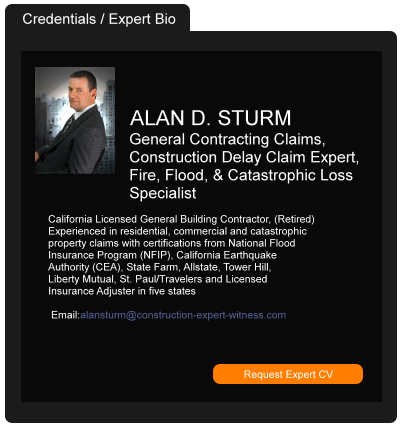City in Ohio Sues Over Alleged Roof Defects
October 29, 2014 —
Beverley BevenFlorez-CDJ STAFFThe city of Worthington “is suing the architect and general contractor responsible for constructing the addition to the Worthington Community Center in 2002,” according to ThisWeek Community News. The city is demanding $1.3 million “to replace the roof on the fitness center and pool addition, which is 12 years old.”
Moody-Nolan, the architect, and Apex/M&P, the general contractor, have been named as defendants in the case. According to the complaint (as reported by ThisWeek), “experts retained by the city found that the roof has failed ‘due to unknown latent design defects and construction defects that have resulted in property damage.”
Read the court decisionRead the full story...Reprinted courtesy of
Condominiums and Homeowners Associations Remain Popular Housing Choices for U-S Homeowners
July 11, 2022 —
Community Associations InstituteFalls Church, Va., July 06, 2022 (GLOBE NEWSWIRE) -- Maintenance-free, safety, and cleanliness are top features that make community associations a popular choice and lifestyle for millions of Americans. According to results from the 2022 Homeowner Satisfaction Survey, the overwhelming majority (89%) of homeowners and condominium association residents rate their overall experience of living in a community association as "very good" or "good" (67%), or neutral (22%).
At a time when community matters most, the majority (87%) said they knew their home was part of a community association and nearly half (45%) said the association made them more interested in the home. Eighty-seven percent of respondents believe that their governing board "absolutely" or "for the most part" serves the best interest of the community. More than half of residents (68%) believe that rules in their communities protect and enhance property values.
Results from almost identical national surveys conducted in 2005, 2007, 2009, 2012, 2014, 2016, 2018, 2020, and 2022 are strikingly consistent. The online survey of 1,507 homeowners and condominium association members nationwide with oversampling was conducted in in four states: Illinois, New York, North Carolina and Washington.
About Community Associations Institute
Since 1973, Community Associations Institute (CAI) has been the leading provider of resources and information for homeowners, volunteer board leaders, professional managers, and business professionals in the more than 355,000 homeowners associations, condominiums, and housing cooperatives in the United States and millions of communities worldwide. With more than 43,000 members, CAI works in partnership with 36 legislative action committees and 63 affiliated chapters within the U.S., Canada, South Africa, and the United Arab Emirates as well as with housing leaders in several other countries, including Australia, Spain, and the United Kingdom. A global nonprofit 501(c)(6) organization, CAI is the foremost authority in community association management, governance, education, and advocacy. Our mission is to inspire professionalism, effective leadership, and responsible citizenship—ideals reflected in community associations that are preferred places to call home. Visit us at www.caionline.org, and follow us on Twitter and Facebook @CAISocial.
Read the court decisionRead the full story...Reprinted courtesy of
Corporate Formalities: A Necessary Part of Business
February 18, 2020 —
Hannah Kreuser - Porter Law GroupMany benefits exist in choosing to create a corporation or limited liability company (“LLC”) as your business entity. However, what attracts most people to these entities is the protection they afford the business owner(s) against personal liability for the business’ obligations, debts, and other liabilities. Whatever reason prompts your decision to form a corporation or LLC, if you are like many smaller businesses, once the formation process is over its back to business as usual.
However, in order to keep the protection against personal liability associated with a corporation or LLC, the business must engage in, what are known as corporate formalities. Corporate formalities are formal actions that must be taken by a corporation or LLC in order to maintain the benefits associated with that business entity. These corporate formalities may be required under California law, by the bylaws, and/or by the operating agreement of your business.
When your business is formed as a corporation, many of the corporate formalities exist as part of California’s Corporations Code (“CCC”). These formalities include: (1) holding annual meetings (CCC § 600); (2) regularly electing directors (CCC § 301); (3) keeping meeting minutes (CCC § 1500); and (4) maintaining accurate corporate records (CCC § 1500). While these are only a few of the corporate formalities existing for corporations in the State of California, these formalities are often overlooked or put off by smaller businesses because they are either unknown to the business or are intended to be complied with later, as the actual running of the business takes priority.
Read the court decisionRead the full story...Reprinted courtesy of
Hannah Kreuser, Porter Law GroupMs. Kreuser may be contacted at
hkreuser@porterlaw.com
Safety Guidance for the Prevention of the Coronavirus on Construction Sites
May 25, 2020 —
Heather Whitehead - Newmeyer DillionAlthough construction projects are generally allowed to proceed under most COVID-19 stay at home orders, owners and contractors need to know how to proceed safely on their construction sites. Not only do workers and others on site need to be protected, but implementation of these protocols is also critical to avoid potential liabilities. Last week, the California Department of Industrial Relations – Division of Occupational Safety & Health (CAL/OSHA) released guidance regarding safety and health procedures to prevent the spread of COVID-19 at construction sites. A link to the CAL/OSHA Safety and Health Guidance is provided here.
While the guidance states that it is not imposing any new legal obligations, it is imperative for businesses to not only be aware of these safety practices, but to incorporate these practices as appropriate on each construction site to protect its employees as well as subcontractors, suppliers and others who may be present on site. Otherwise, owners and contractors face potential exposure to regulatory action, including potential penalties and other liabilities, if they fail to properly incorporate these guidelines into the Injury and Illness Prevention Program (IIPP) at each construction site. Now is the time to update your current Injury and Illness Prevention Program (IIPP) to include recommended protocols for preventing the spread of the Coronavirus.
Read the court decisionRead the full story...Reprinted courtesy of
Heather Whitehead, Newmeyer DillionMs. Whitehead may be contacted at
heather.whitehead@ndlf.com
NYC-N.J. Gateway Rail-Tunnel Work May Start in 2023
March 28, 2022 —
Elise Young - BloombergThe $12.3 billion Gateway rail tunnel linking New York City and New Jersey has reached a major preconstruction milestone with the completion of geotechnical studies necessary for the engineering phase.
The analysis of rock and silt from 75 earth samples on both sides of the Hudson River marks the latest in a series of swift leaps toward a potential 2023 start date. The project had been delayed years by former President Donald Trump, who had argued that costs should be covered solely by the states, not U.S. taxpayers.
The samples, from depths of 48 feet to 505 feet (14.6 meters to 154 meters), will guide design, according to the Gateway Development Commission, the project’s overseer. Some areas of particular interest to the researchers were on Manhattan’s West Side, parts of which were underwater before landfill was added many years ago.
Read the court decisionRead the full story...Reprinted courtesy of
Elise Young, Bloomberg
No Coverage for Collapse of Building
January 04, 2021 —
Tred R. Eyerly - Insurance Law HawaiiDamage to a building caused by the break of a water pipe was not a collapse under the policy. Naabani Twin Stars v. Travelers Cos., 2020 U.S. Dist. LEXIS 196443 (D. N. M. Oct. 22, 2020).
An underground water line ruptured on plaintiffs property This caused a collapse under the adjacent parking lot, which in turn caused land beneath the building go change positions and damage the building. A geotechnical consultant concluded that a material change in the site conditions occurred as a direct result of the rupture of the water pipe in the parking lot, and that those changes directly affected the settlement of the building.
Travelers denied coverage for the damage. Travelers concluded that the building settlement was the result of subsurface movement, which invoked the earth movement exclusion. Travelers inspection concluded that the building was not in a state of collapse. The policy defined collapse as "an abrupt falling down or caving in of a building or structure, or any part of a building or structure, with the result that the building, or part of the building, cannot be occupied for its intended purpose."
Read the court decisionRead the full story...Reprinted courtesy of
Tred R. Eyerly, Damon Key Leong Kupchak HastertMr. Eyerly may be contacted at
te@hawaiilawyer.com
Leveraging the 50-State Initiative, Connecticut and Maine Team Secure Full Dismissal of Coverage Claim for Catastrophic Property Loss
March 23, 2020 —
Regen O'Malley - Gordon & Rees Insurance Coverage Law BlogOn behalf of Gordon & Rees’ surplus lines insurer client, Hartford insurance coverage attorneys Dennis Brown, Joseph Blyskal, and Regen O’Malley, with the assistance of associates Kelcie Reid, Alexandria McFarlane, and Justyn Stokely, and Maine counsel Lauren Thomas, secured a full dismissal of a $15 million commercial property loss claim before the Maine Business and Consumer Court on January 23, 2020. The insured, a wood pellet manufacturer, sustained catastrophic fire loss to its plant in 2018 – just one day after its surplus lines policy expired.
Following the insurer’s declination of coverage for the loss, the wood pellet manufacturer brought suit against both its agent, claiming it had failed to timely secure property coverage, as well as the insurer, alleging that it had had failed to comply with Maine’s statutory notice requirements. The surplus lines insurer agreed to extend the prior policy several times by endorsement, but declined to do so again. Notably, the insured alleged that the agent received written notice of the non-renewal prior to the policy’s expiration 13 days before the policy’s expiration. However, the insured (as well as the agent by way of a cross-claim) asserted that the policy remained effective at the time of the loss as the insured did not receive direct notice of the decision not to renew coverage and notice to the agent was not timely. Although Maine’s Attorney General and Superintendent intervened in support of the insured’s and agent’s argument that the statute’s notice provision applied such that coverage would still be owed under the expired policy, Gordon & Rees convinced the Court otherwise.
At issue, specifically, was whether the alleged violation of the 14-day notice provision in Section 2009-A of the Surplus Lines Law (24-A M.R.S. § 2009-A), which governs the “cancellation and nonrenewal” of surplus lines policies, required coverage notwithstanding the expiration of the policy. The insured, the agent, and the State of Maine intervenors argued that “cancellation or nonrenewal” was sufficient to trigger the statute’s notice requirement, and thus Section 2009-A required the insurer to notify the insured directly of nonrenewal. In its motion to dismiss, Gordon & Rees argued on behalf of its client that Section 2009-A requires both “cancellation and nonrenewal” in order for the statute to apply. Since there was no cancellation in this case – only nonrenewal – Gordon & Rees argued that Section 2009-A is inapt and that the insurer is not obligated to provide the manufacturer with notice of nonrenewal. Alternatively, it argued that the statute is unconstitutionally vague and unenforceable.
Read the court decisionRead the full story...Reprinted courtesy of
Regen O'Malley, Gordon & ReesMs. O'Malley may be contacted at
romalley@grsm.com
Chesapeake Bay Water Quality Is Still in Trouble, Two Major Reviews Say
November 07, 2022 —
Pam McFarland - Engineering News-RecordTwo separate assessments of the health of the Chesapeake Bay indicate that most jurisdictions within its watershed are not on track to meet target goals to cut nitrogen and phosphorus discharge levels by 2025. But new plans and programs put in place in 2022 could improve the restoration trajectory, according to the U.S. Environmental Protection Agency.
Reprinted courtesy of
Pam McFarland, Engineering News-Record
Ms. McFarland may be contacted at mcfarlandp@enr.com
Read the full story... Read the court decisionRead the full story...Reprinted courtesy of


































































